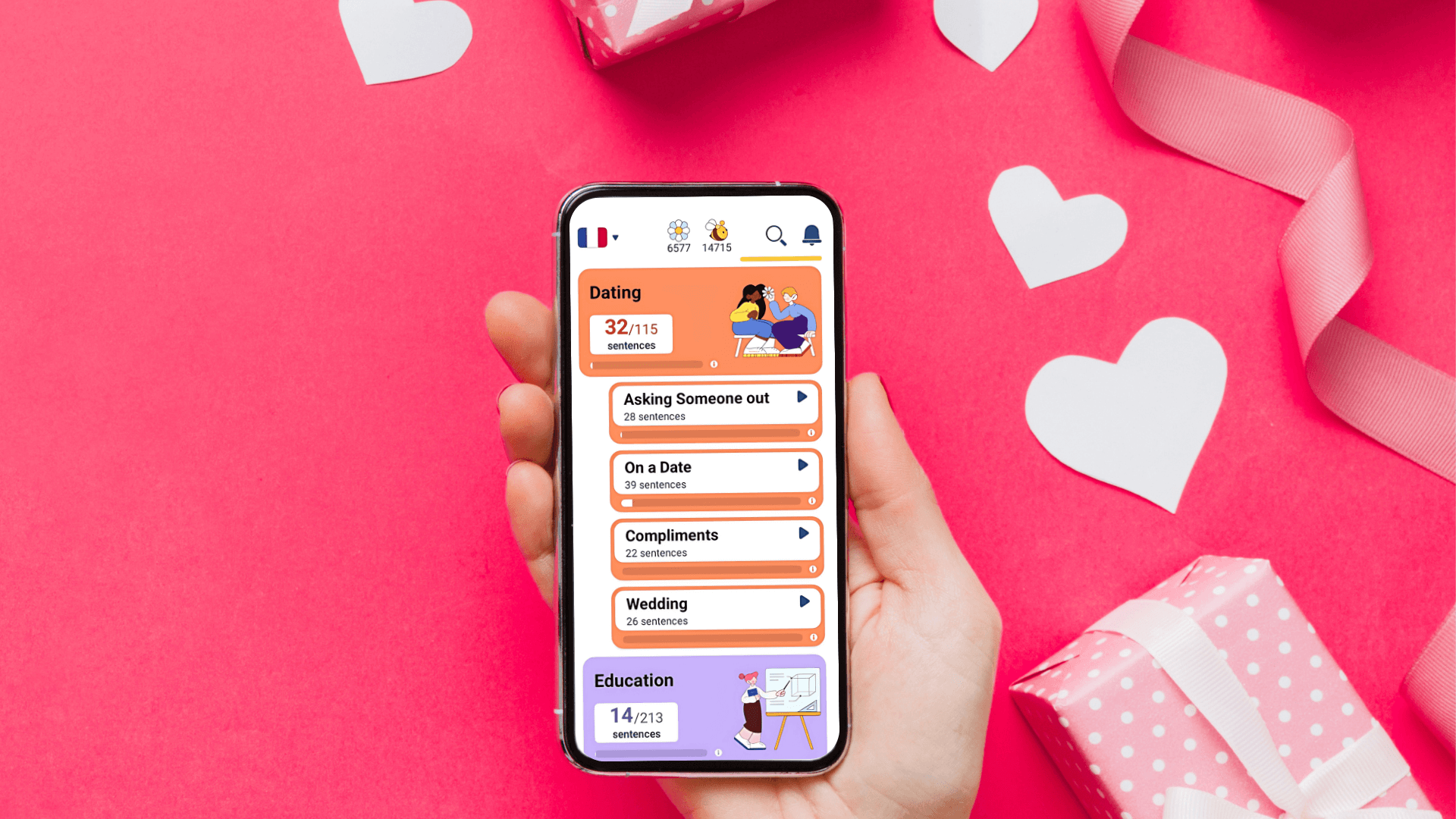How to Say "I Love You" in 30 Languages

Love can cross all borders, especially if you have the right words to say "I love you". The romantic French "Je t'aime," the German "Ich liebe dich," The Spanish "Te amo," the Italian "Ti amo," the Japanese "Aishiteru" or Mandarin Chinese "Wo ai ni" each carry a strong emotional charge from their respective cultures and languages. The cultural fingerprint adds value to the expression of love, whether you say "I love you" to your current partner or explore the option of finding true love abroad. Are you ready to let your heart speak globally?
How to Say "I Love You" in 30 Different Languages
Expressing love globally is easier than you may think. Saying “I love you” in a different language not only honors the emotion but also borrows more layers of meaning from the target culture. Across languages, "I love you" reflects the soul of a culture. Here’s how 30 languages articulate the world's most powerful phrase, proving that love is both deeply personal and universal at the same time.
- Arabic: أنا أحبك (Ana uhibbuka) – to a man, أنا أحبكِ (Ana uhibbuki) – to a woman).
- Bulgarian: Обичам те (Obicham te).
- Catalan: T’estimo.
- Chinese (Traditional): 我愛你 (Wǒ ài nǐ). / Chinese (Simplified): 我爱你 (Wǒ ài nǐ).
- Croatian: Volim te.
- Czech: Miluji tě.
- Danish: Jeg elsker dig.
- Dutch: Ik hou van jou.
- Finnish: Rakastan sinua.
- French: Je t’aime.
- German: Ich liebe dich.
- Greek: Σ' αγαπώ (S’agapó).
- Hebrew: אני אוהב אותך (Ani ohev otach) – male to female, אני אוהבת אותך (Ani ohevet otcha) – female to male.
- Hindi: मैं तुमसे प्यार करता हूँ (Main tumse pyaar karta hoon) – male speaker, मैं तुमसे प्यार करती हूँ (Main tumse pyaar karti hoon) – female speaker.
- Hungarian: Szeretlek.
- Indonesian: Aku cinta kamu.
- Italian: Ti amo.
- Japanese: 大好きだよ (Daisuki da yo) or 愛してる (Aishiteru).
- Korean: 사랑해 (Saranghae).
- Norwegian: Jeg elsker deg.
- Polish: Kocham cię.
- Portuguese (Brazil): Eu te amo.
- Romanian: Te iubesc.
- Russian: Я тебя люблю (Ya tebya lyublyu).
- Slovak: Ľúbim ťa.
- Spanish: Te amo.
- Swedish: Jag älskar dig.
- Thai: ฉันรักคุณ (Chan rak khun) – female speaker; ผมรักคุณ (Phom rak khun) – male speaker).
- Turkish: Seni seviyorum.
- Ukrainian: Я тебе кохаю (Ya tebe kokhayu).
5 Ways to Practice Saying "I Love You" in Different Languages

Mastering heartfelt phrases like "Ti amo" or "Wo ai ni" is easy. However, it's easy to forget the new information you've learned. What can you do to better memorize words and phrases related to
1. Spaced Repetition
Why it works: Spacing out practice sessions boosts long-term memory, and it's more efficient than learning non-stop.
How to do it: Write phrases like “Ich liebe dich” (German) or “Saranghae” (Korean) on index cards. Add pronunciation guides (e.g., "S'agapó" = "Sah-gah-POH"). Review the cards daily, then weekly, focusing on the tricky ones.
2. Shadow Native Speakers via YouTube or Podcasts
Why it works: Mimicking accents trains your pronunciation and sharpens your listening skills.
How to do it: Listen to a fragment from a speech or a dialog, pause, repeat, and record yourself. Compare your version with the original. Romance movies are easy to practice conversations with.
3. Write a Creative Love Letter
Why it works: This exercise combines language practice with emotional expression, making it ideal for introverts and creatives.
How it works: Pen a heartfelt love letter in your target language from the point of view of a film or book character. Weave in "I love you" in your text and practice writing.
4. Incorporate the Phrases you Learned into Your Daily Routine
Why it works: Writing sticky notes of the objects in your household to learn and practice vocabulary is a popular learning technique. You can also use it with any other words and phrases.
How to do it: Say "Volim te" (Croatian) to your pet or "Rakastan sinua" (Finnish) to your reflection in the mirror. Repetition is key.
Label household items with sticky notes (e.g., "Ti amo" on the coffee maker and the language on the reverse side). Go around the house, read the phrase, and say what language it's in. See the reverse to check your answer.
5. Sing it out
Why it works: Music helps words, phrases, and expressions stick, just like that song that’s stuck in your head.
How to do it: Sing along "Ti amo" with Umberto Tozzi or "Wo ai ni" with C-pop stars. Learn love songs like "Ai Se Eu Te Pego" (Portuguese) or "Mein Herz Brennt" (German).
Share the Love for Language Learning

Surprise your loved ones with a language-learning subscription. The gift of language learning is one of the best, not to mention long-lasting.
Designed for curious minds and busy schedules, FunEasyLearn is not just about memorizing words, it’s about discovering how to laugh, love, and live in 34 languages. With science-backed methods, fun educational games, illustrations, and audio recorded by native speakers, FunEasyLearn turns a smartphone into a powerful pocket companion.
FunEasyLearn Benefits
📊 34 Language Courses (from 62 native languages)
Master Spanish, Korean, Italian, German, Japanese, and more.
🖼️ 11,000 Audio-Visual Flashcards
Learn with images, native speaker audio, and interactive games.
⚛️ Science-Backed Methods
Spaced repetition and bite-sized lessons for stress-free retention.
🗣️ Real-World Benefits
Learners build their vocabulary to interact in real-life situations.
💰 Affordable & Accessible
Unlocks a lifetime of global connection at a bargain price.
Who can benefit from a FunEasyLearn subscription?
- Aspiring polyglots craving K-drama lyrics or Parisian charm;
- Travelers preparing to navigate markets, trains, and friendships abroad;
- Young people looking to open new career opportunities
- Families bridging cultural gaps through shared learning.
Are you ready to express love in a foreign language?




